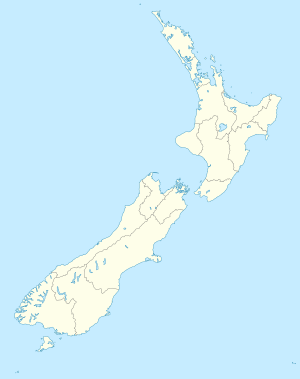Linton, New Zealand facts for kids
Quick facts for kids
Linton
|
|
|---|---|
|
Suburb
|
|
| Country | New Zealand |
| Local authority | Palmerston North |
| Electoral ward |
|
| Postcode(s) |
4472
|
|
|
||
Linton is a suburb of Palmerston North, situated 11km south-west of the city.
The Linton Military Camp, the largest army camp in New Zealand, is four kilometres north-east of the settlement.
History
Linton is named for James Linton, an early settler in the area, and also twice Mayor of Palmerston North. The Scotsman was one of the first European settlers in Palmerston. He and his wife, Sarah, arrived on horseback from Wairarapa early in 1871. Linton served as mayor of Palmerston North 1879-82 and 1884-5, and was a director and ardent promoter of the Wellington and Manawatu Railway Company.
The site of the original planned Linton township is several kilometres away from current army camp, at the location of a Wellington and Manawatu Railway Company station on the Wellington ‒ Longburn railway line. Along with several other directors of this private company, James Linton was honoured by having a railway station settlement on the line named after him. The line, opened in 1886, was a successful venture, but the Linton township did not develop. In 1889, a school was established, and St Columba's Church, which serve the small farming community.
Prior to 1996, Linton was part of the Manawatu electorate. However, due to the reformation of the electoral system from FPP to MMP, the electorate of Palmerston North's boundaries were redrawn to include Linton. In 2007, the boundaries were redrawn and Linton was shifted into the Rangitikei electorate.
Until 2013, Linton was part of the Ashhurst-Fitzherbert Ward of Palmerston North City Council, alongside Aokautere and Turitea.
Demographics
Pihauatua statistical area covers 141.87 km2 (54.78 sq mi) and had an estimated population of 1,070 as of June 2023, with a population density of 7.5 people per km2.
| Historical population for Pihauatua | ||
|---|---|---|
| Year | Pop. | ±% p.a. |
| 2006 | 1,089 | — |
| 2013 | 1,185 | +1.21% |
| 2018 | 1,227 | +0.70% |
Before the 2023 census, Pihauatua had a larger boundary, covering 143.78 km2 (55.51 sq mi). Using that boundary, Pihauatua had a population of 1,227 at the 2018 New Zealand census, an increase of 42 people (3.5%) since the 2013 census, and an increase of 138 people (12.7%) since the 2006 census. There were 414 households, comprising 648 males and 582 females, giving a sex ratio of 1.11 males per female. The median age was 39.2 years (compared with 37.4 years nationally), with 261 people (21.3%) aged under 15 years, 225 (18.3%) aged 15 to 29, 603 (49.1%) aged 30 to 64, and 141 (11.5%) aged 65 or older.
Ethnicities were 88.5% European/Pākehā, 11.5% Māori, 1.7% Pacific peoples, 4.6% Asian, and 3.7% other ethnicities. People may identify with more than one ethnicity.
The percentage of people born overseas was 18.6, compared with 27.1% nationally.
Although some people chose not to answer the census's question about religious affiliation, 55.3% had no religion, 34.2% were Christian, 0.5% had Māori religious beliefs, 0.5% were Hindu, 0.5% were Muslim, 0.7% were Buddhist and 0.7% had other religions.
Of those at least 15 years old, 297 (30.7%) people had a bachelor's or higher degree, and 105 (10.9%) people had no formal qualifications. The median income was $44,000, compared with $31,800 nationally. 249 people (25.8%) earned over $70,000 compared to 17.2% nationally. The employment status of those at least 15 was that 561 (58.1%) people were employed full-time, 174 (18.0%) were part-time, and 24 (2.5%) were unemployed.
Education
Linton Country School was a co-educational full state primary school, which opened in 1889 and closed in 2023 due to a small roll, and problems with staff, governance and finance.


